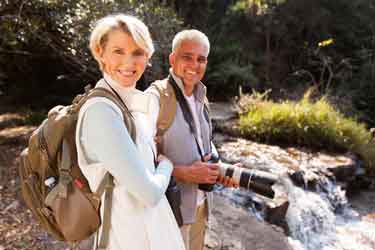Table of Contents
Shoveling is an essential part of the gardening experience. However, poor shoveling technique can lead to back, shoulder and neck pain. For those individuals with osteoporosis, it can cause compression fractures. To avoid these outcomes, I provide eight shoveling safety tips I encourage my patients to follow — especially those with osteoporosis, osteopenia, or low back pain.
- Wear sturdy shoes that keep you grounded and that allow you to transfer your force into the ground.
- Use a sharp shovel that can penetrate the soil in your garden.
- Use a shovel that is the right length for you.
- The shovel handle should be between your shoulder and your hip. That is your power zone.
- Take the earth or gravel out of the hole with your legs and not your back.
- Leverage (or offset) the load onto your leg.
- Keep the load close to your body as you move the shovel.
- When moving in another direction, move with your feet and do not rotate.

Shoveling Safety Tips Video Demonstration
Eight Shoveling Safety Tips
Follow these shoveling safety tips when you move plants, re-establish gardens, or replant things. This is the advice that I give to many of my clients.
Wear Sturdy Shoes
- Wear sturdy shoes that allow you to transfer your force into the ground.
Choose the Right Shovel
- Use a sharp shovel that is the right height for you.
- At just under five-two, a short-handled shovel is perfect for me.
- For my taller clients, I would recommend that they use a longer handled shovel so that they can get up and behind the shovel.
- Because I’m not that tall, I use a short shovel.
- Anybody over five-seven using a short shovel will end up in a position where the shovel is below the height of their hip.
- You do not want to be in this position because you can’t get your body weight over the shovel.
- The handle of the shovel should be below your shoulder and above your hip. That is in your power zone.
Establish Your Power Zone for Shoveling
- Remove the earth or gravel with your legs and less so with your back and your arms.
- If you lift with your back and arms your legs would be straight, forcing you to bend from the back and use your arms.
- You might not experience the detrimental effects of this within a day, but eventually you pay the consequences with your bones or discs.
- Use your legs to lift.
- If it’s a really heavy load, offset some of the weight onto your thigh as you’re coming up.
- Then keep that load as close as possible as you move your load.
- If you are moving the load in another direction, always move your feet in the direction that you are going to drop the load, as opposed to just taking it and rotating from the body. That movement is to be a lot more harmful on your back.
That covers shoveling safety tips for your garden.
Exercise Recommendations for Osteoporosis
Exercise is an essential ingredient to bone health. If you have osteoporosis, therapeutic exercise needs to be part of your osteoporosis treatment program.
But what exercises should you do and which ones should you avoid? What exercises build bone and which ones reduce your chance of a fracture? Is Yoga good for your bones? Who should you trust when it comes to exercises for osteoporosis?
A great resource on exercise and osteoporosis is my free, seven day email course called Exercise Recommendations for Osteoporosis. After you provide your email address, you will receive seven consecutive online educational videos on bone health — one lesson each day. You can look at the videos at anytime and as often as you like.

I cover important topics related to osteoporosis exercise including:
- Can exercise reverse osteoporosis?
- Stop the stoop — how to avoid kyphosis and rounded shoulders.
- Key components of an osteoporosis exercise program.
- Key principles of bone building.
- Exercises you should avoid if you have osteoporosis.
- Yoga and osteoporosis — should you practice yoga if you have osteoporosis?
- Core strength and osteoporosis — why is core strength important if you have osteoporosis?
Enter your email address and I will start you on this free course. I do not SPAM or share your email address (or any information) with third parties. You can unsubscribe from my mail list at any time.
Activities of Daily Living
Visit my page dedicated to Activities of Daily Living to learn about other activities of daily living.

Comments